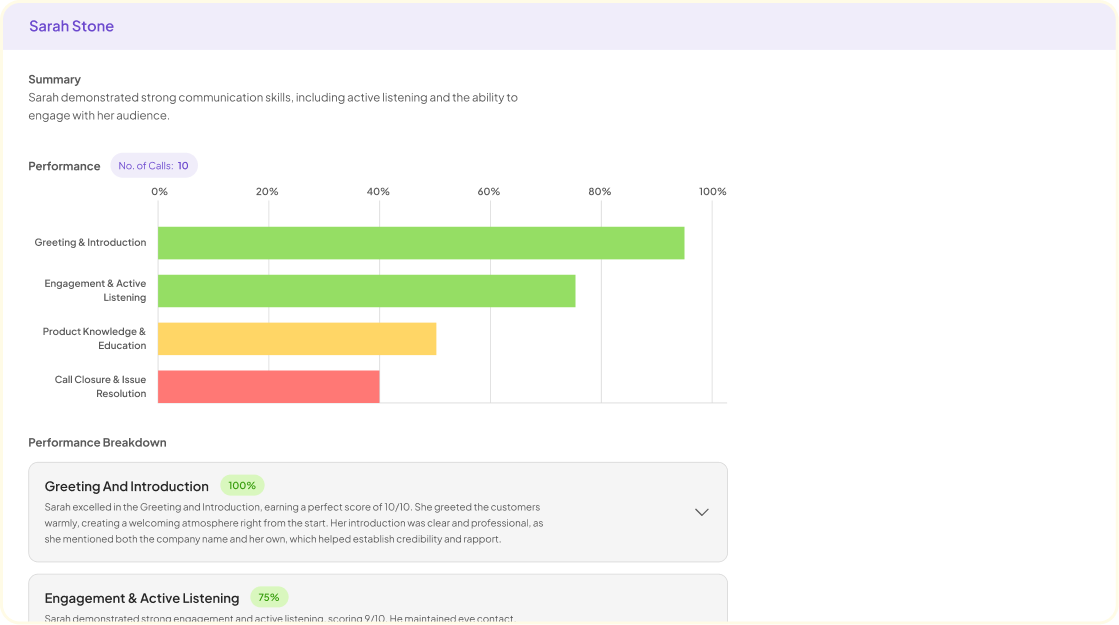Research summary sheets are essential tools that streamline the analysis and presentation of data. They serve as a condensed version of larger research projects, highlighting key findings and insights. Effective summary sheets not only simplify communication but also enable quick decision-making by presenting critical information in an accessible format.
Creating a research summary sheet involves organizing the data thoughtfully and extracting relevant themes. By focusing on the who, what, and why of your research, you can craft a guide that resonates with your audience. This approach ensures that stakeholders understand the core messages without being overwhelmed by excessive details.
Crafting an Effective Research Summary Sheet
Crafting an effective research summary sheet involves tailoring the content to present insights clearly and concisely. Begin by identifying key findings from your research. This foundational step ensures that your most impactful data is prominently featured. Organizing this information logically enhances readability, allowing users to quickly pinpoint essential details.
Next, utilizing bullet points can help break down complex data into digestible segments. Consider highlighting themes, trends, and noteworthy quotes from your sources. This practice fosters a comprehensive understanding of the research context. Remember, an effective research summary guide should not only present data but also convey its significance and implications, helping viewers grasp the overall narrative. Ultimately, the goal is to create a resource that is both informative and engaging, making your research accessible to a wider audience.
Understanding the Purpose: Research Summary Guide
Understanding the purpose of a research summary guide is essential for effective data analysis and reporting. A research summary sheet serves as a compact overview of key findings, aiding readers in grasping complex information quickly. This tool organizes data into digestible segments, focusing on major themes, insights, and recommendations based on comprehensive research.
To create a meaningful research summary, consider the following aspects. First, identify key findings that represent the research's essence. Next, distill these findings into concise explanations, ensuring clarity and relevance. Lastly, highlight actionable insights that stakeholders can apply, making the summary not just informative but practical. By following these steps, users can craft a powerful research summary guide that enhances understanding and drives decision-making based on reliable data.
Key Components to Include: Research Summary Guide
A well-crafted Research Summary Guide is crucial when compiling a research summary sheet. Start by identifying the core objectives of the research. It’s essential to clearly outline the research questions you aimed to answer. This establishes a foundation for anyone reviewing the summary and ensures clarity on what was investigated and why.
Next, highlight the key findings. Summarize the most significant results, emphasizing their implications and relevance to the original questions. Including any limitations in your research process adds transparency. Conclude by suggesting actionable recommendations based on your findings, which helps translate research insights into practical steps. By integrating these components, your Research Summary Guide will effectively communicate the essence of your research, allowing others to grasp the critical insights readily.
💬 Ask About This Article
Have questions? Get instant answers about this article.
Tips for Optimizing Your Research Summary Sheet
To optimize your research summary sheet, begin by organizing your information clearly. Create sections that include a brief introduction, key findings, and any recommendations. This structure aids in readability and helps the reader quickly grasp essential insights. Clear headings and bullet points can guide the reader’s eye and make the data more digestible.
Next, focus on conciseness. Each entry should convey its message in as few words as possible while still being informative. Avoid jargon unless necessary, as simplicity increases understanding. Lastly, regularly review and update your summary sheet. Refreshing the data ensures relevance, and this practice enhances the summary's effectiveness as a research summary guide. By keeping these tips in mind, you can create a resource that not only informs but also engages your audience.
Organizing Information Strategically: Research Summary Guide
Organizing information strategically is essential in creating an effective research summary guide. The key lies in structuring data so it remains accessible, comprehensible, and actionable. First, categorize your information based on major themes or topics derived from your research. This classification allows for a clearer view of the overarching insights, thereby simplifying comparisons and analyses.
Next, systematically present your findings. Use visuals, such as charts or graphs, to highlight data points and trends. Concise bullet points can summarize critical insights, making it easier for readers to digest. Finally, consider outlining potential implications of these findings to guide future actions. By following these techniques, you can ensure your research summary is not just informative but a practical tool for decision-making.
Ensuring Clarity and Conciseness: Research Summary Guide
Clarity and conciseness are crucial when crafting a research summary guide. A well-structured summary allows readers to grasp key insights without sifting through excess information. Begin by highlighting the primary findings and insights of your research, ensuring these points are direct and relevant. Easy readability encourages engagement, allowing stakeholders to make informed decisions efficiently.
To ensure clarity, consider including specific types of information. Start with an overview that encapsulates the main objectives and results. Follow this with distinct headings for categories such as findings, themes, and recommendations. Each section should provide a succinct explanation, supported by data where applicable. Visual aids, like charts or bullet points, can enhance understanding. Overall, aim for a compelling summary that captures the essence of your research while remaining concise and focused.
Conclusion: Mastering Your Research Summary Guide
Mastering your Research Summary Guide involves understanding key insights and themes derived from your data. By synthesizing these elements, you create a tool that highlights essential findings, making it easier to communicate your research outcomes. A well-structured summary sheet allows you to capture main points, patterns, and findings, facilitating better decision-making and strategic planning.
Ultimately, mastering the creation of a research summary sheet enhances your ability to convey complex information effectively. With practice, you'll be able to streamline the summarization process, ensuring clarity and relevance in communicating your insights. Remember, a comprehensive summary not only serves as a reference but also as a valuable resource in aiding future research endeavors.
💬 Ask About This Article
Have questions? Get instant answers about this article.


